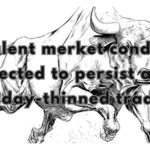Leverage is a crucial aspect of forex trading that allows traders to control a larger position size with a smaller amount of capital. It magnifies both potential profits and potential losses. In forex trading, leverage is often expressed as a ratio, such as 50:1, 100:1, or even higher.
Here’s how leverage works in forex trading:
1. Definition of Leverage:
Leverage is essentially a loan provided by the broker to the trader. It enables the trader to control a position that is much larger than their own capital. For example, with a leverage of 50:1, a trader can control a position of $50,000 with only $1,000 of their own capital.
2. Calculating Leverage:
Leverage is expressed as a ratio of the total position size to the trader’s equity. If a trader has $1,000 in their account and they open a position worth $50,000, the leverage is 50:1.
Leverage=Total Position SizeTrader’s EquityLeverage=Trader’s EquityTotal Position Size
3. Potential Profits and Losses:
Leverage amplifies both gains and losses. If the market moves in the trader’s favor, the profits are magnified. However, if the market moves against them, losses can also accumulate rapidly.
4. Margin Requirement:
Leverage is closely tied to margin requirements. When a trader opens a leveraged position, they are required to deposit a certain amount of money, known as margin, as collateral. The margin is a percentage of the total position size.
5. Margin Call:
If a trade moves against a trader to a certain extent, the broker may issue a margin call, requiring the trader to deposit additional funds to cover potential losses. If the trader fails to do so, the broker may automatically close the position to limit further losses.
6. Risk Management:
While leverage can enhance profits, it also increases the risk of significant losses. Effective risk management is crucial when trading with leverage. Traders often use stop-loss orders and position sizing strategies to control risk.
7. Regulatory Limits:
Different countries and regulatory bodies have varying rules regarding maximum leverage allowed in forex trading. Some regulators impose restrictions to protect retail traders from excessive risk.
8. Choosing the Right Leverage:
Traders should carefully consider the level of leverage they use based on their risk tolerance, trading strategy, and overall financial situation. Using excessive leverage without proper risk management can lead to significant losses.
In summary, leverage is a powerful tool in forex trading that allows traders to control larger positions with a smaller amount of capital. However, it comes with increased risk, and traders should use it judiciously and incorporate effective risk management strategies into their trading plans.




